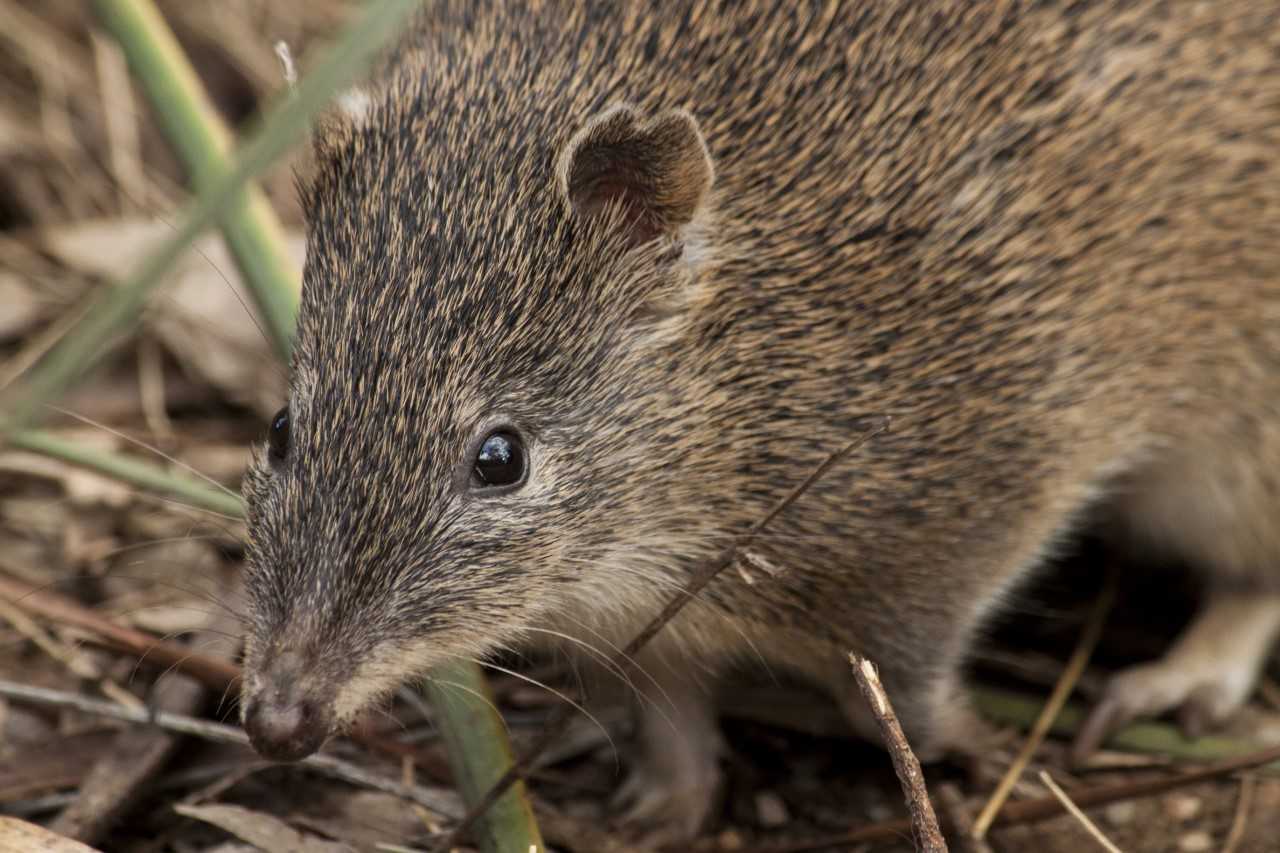University of Adelaide conservation biologist Dr. Jasmin Packer is working to find ways to conserve and promote bandicoot populations in the Mt Lofty Ranges. Dr. Packer was featured recently on the ABC’s Gardening Australia, to demonstrate some of the novel conservation work she’s been doing, building ‘Bandicoot Bungalows’ to provide better connectivity between habitat fragments.
Southern Brown Bandicoots are endangered in the Adelaide Mt Lofty Ranges because of habitat loss and fragmentation, leaving their populations isolated in small patches, and vulnerable to predators like cats and foxes. Southern Brown Bandicoots are the last remaining species of eight species from the bilby and bandicoot family, Peramelidae, in the Adelaide Hills/Mt Lofty Ranges. They are ecosystem engineers that do jobs that nothing else can e.g. improving soil, and spreading seeds and truffle spores (truffles and other mycorrhizal fungi are essential partners for most of our native plants) – and thus promote ecosystem function. It is therefore critical that we help to protect and restore habitat links for bandicoots. However, previous University of Adelaide research, in conjunction with the SA Museum has that found bandicoot populations aren’t mixing and need better connected habitat. This means that bandicoot populations are increasingly genetically isolated, putting them at risk of inbreeding and genetic diseases. University of Adelaide research has also found that blackberry thickets have become critical bandicoot habitat in open areas – and that conservation and restoration projects to remove them will have the unintended consequence of isolating bandicoots further.
Dr. Jasmin Packer, along with students and collaborators, are working with the Department for Environment and Water (DEW), to improve the conservation status of bandicoots from endangered to vulnerable in the Mt Lofty Ranges. They’re investigating which of the IUCN criteria (that classifies them as endangered) they can most influence e.g. connectivity to overcome isolated populations and/or area of occupancy, and continuing to work to better understand how to improve bandicoot habitat connectivity, including whether drainage lines could be enhanced to help bandicoots adapt to climate change in the Mt Lofty Ranges. They are hoping to better protect bandicoots by building more habitat links between bushland, as well as to clarify which of the known barriers (habitat gaps, roads, foxes and cats) are the critical ones that stop bandicoots from mingling during breeding (spring-summer) and dispersal (summer-autumn) seasons (e.g. GPS tracking, wildlife cameras and/or bandicoot demographic surveys). Effective ways to overcome these barriers can then be developed, tested and evaluated with their partners in state government, local Councils and community groups. This might involve grazing exclosures, intensive revegetation, wildlife tunnel(s), encouraging traffic to slow down in breeding season, and building bandicoot bungalows as artificial ‘stepping stone’ habitat to extend and link existing habitat.
Contact for more info:
Dr. Jasmin Packer — jpacker@adelaide.edu.au
Featured Image: Southern Brown Bandicoot, by Casey O’Brien Wildlife Photography









